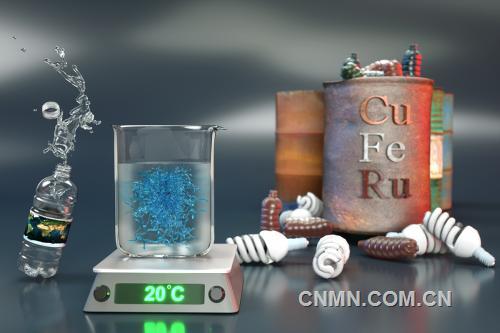
Metal-free, organic catalysts for atom transfer radical polymerization. (Source: Peter Allen , UCSB )
According to foreign media reports, chemical material science experts from the University of California, Santa Barbara, and the Dow Chemical Company have created a new process that can overcome a major obstacle to the widespread use of controlled radical polymerization.
With billions of dollars worth of global industrial value of polymers, the advent of atom transfer radical polymerization technology as a well-defined process for the manufacture of well-defined polymers, these polymers are widely used, from adhesives to electronics. However, the current ATRP method uses metal catalysts, and one of the major obstacles to its application is metal contamination, such as materials used in biomedicine.
The new method of radical polymerization does not involve copper-based heavy metal catalysts. Their innovation is that the metal-free ATRP process uses an organic photocatalyst with highly controlled chemical reactions of light as a stimulus.
Craing Hawker , director of the DOW materials at the University of California, Santa Barbara, said: “ The great challenge for ATRP is: How do we do it without any metal contamination? We expect to develop an organic catalyst that reduces the excitation state highly, and we found that Thiazide is an easily prepared catalyst."
"This is the industry's ' embedded ' technology," said Javier Read de Alaniz , chief researcher and professor of chemistry and biochemistry at the University of California, Santa Barbara . "People are used to using the same raw materials for ATRP , but now we must have the ability to do without copper." Even trace amounts of copper have problems with microelectronics as conductors, as well as biologically and biologically and cytotoxicly. .
Read de Alaniz , Hawker and Brett Fors  The postdoctoral fellow , who has now led the study with Cornell University in the United States, was initially inspired by a photosensitivity ruthenium catalyst. Their research was recently published in the Journal of the American Chemical Society as "metal-free atom-transfer radical polymerization." This research has been made possible by the support of DOW and UCSB University engineering research partners.
ATRP has been widely used in dozens of major industries, but the new metal-free rapid polymerization process "promotes controlled radical polymerization into new areas and new applications," according to Hawker . "Many of the processes used today started with ATRP . Now this method opens the door to a new class of organic photocatalysts."
The controlled radical polymerization process is the key to the synthesis of functional block polymers. As a catalyst, phenothiazine builds block copolymers in a sequential manner, achieving a high degree of end-to-end connection. This translates into a high degree of versatility of the polymer structure and an efficient process.
"Our process doesn't need to be hot. You can do it with a simple LED light at room temperature ," Hawker said. "We have succeeded in having a series of vinyl monomers, so this aggregation strategy is very useful on many levels."
" The development of active radical processes, such as ATRP , can be said to be one of the biggest things that happened in polymer chemistry in the past decades," he added. "This new discovery will significantly advance the entire field."
Shower Room Hinges are used for connecting glasses to door frames or walls. They are Shower Room Accessories, SS/Brass/Zinc Alloy Shower Room Hinge. The most common hinge is 180 Degree Open Glass Door Hinges
Material: Brass, Zinc,etc
Should you have any further demands, please feel free to contact us any time. And welcome for OEM products with detailed technical drawings.
Shower Room Hinges
Shower Room Hinges,Hinges For Shower Rooms,Stainless Steel Shower Room Hinges,Brass Shower Room Hinges
Greatwall Hardware International Limited , https://www.greatwall-hardware.com